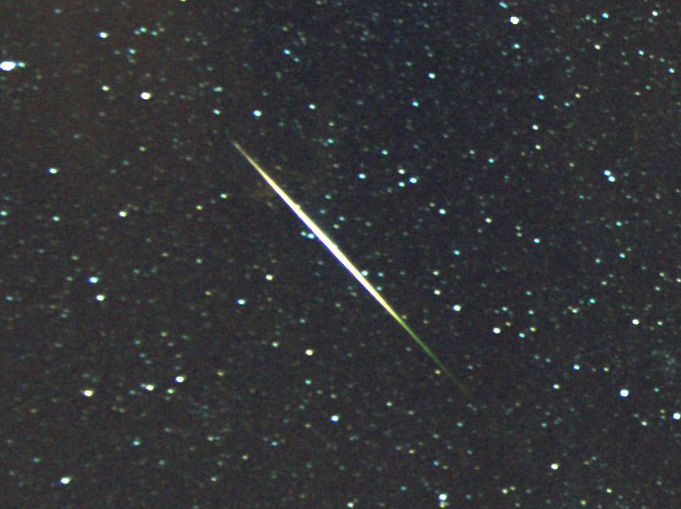2020 August 11
Perseid maximum is here
The weather has been rather variable over the past few days, with very hot and humid days and warm nights with variable amounts of cloud. However, observers across the British Isles have reported increasing Perseid meteor activity. The Perseids are one of the most reliable showers of the year, producing an abundance of fast, bright meteors. This year, at the peak, visual and DSLR observers will experience a little interference from the last Quarter Moon in Taurus in the early morning hours, but the decline from peak activity will be observable in darker skies. You can see a recent set of video clips from August 6/7 here.

Observers watching after midnight on August 11-12 should experience increasing activity towards dawn, as the shower radiant at RA 03h 13m, Dec. +58° (near the Double Cluster, on the Perseus-Cassiopeia border) climbs higher in the eastern sky. Activity should be just starting to decline by the time darkness falls on Aug 12-13. The first Perseid meteors were detected in late July and the shower will continue to be active until about August 21. The shower’s activity displays a marked ‘kick’ around August 8-9 with steadily increasing observed rates until the peak, which is expected at around 14h UT (15h BST) on August 12 this year, during daylight hours from the UK. The peak is quite broad, however, which means that the two nights of Tuesday night to Wednesday morning (August 11-12) and Wednesday night to Thursday morning (August 12-13) will probably be equally productive for observers in the UK.
The Perseids are also an ideal target for digital imaging due to the relative abundance of bright meteors, but the considerable prevalence of satellite trails on DSLR images these days means that observers should ideally make a continuous series of short exposures (15 seconds max.) at high ISO and full aperture to enable the majority of the satellite trails to be detected by being visible on more than one exposure. DSLR observers should also be alert for dewing of their camera lenses if the equipment is left out overnight.
The best observed rates are found when the Perseid radiant is highest in the sky during the pre-dawn hours, but even in early evening the radiant is already at quite a favourable elevation above the horizon. Under cloudless skies, and in dark sites, observers can expect to see between 50 and 70 meteors each hour near the peak. Even in towns or cities observed rates may still be around ten per hour in the early morning hours when the radiant is high.
Observations in recent years have revealed noticeable variations in activity from year to year and we shall just have to wait and see what is in store for us in 2020.
The BAA’s visual meteor report forms, available as downloads in both pdf and Excel formats from this page, enable observers to record the details of each meteor seen. These include: time of appearance (UT); apparent magnitude (brightness); type (shower member, or random, ‘background’ sporadic); constellation in which seen; presence and duration of any persistent train. Other notes may mention flaring or fragmentation in flight, or marked colour. Watches should ideally be of an hour’s duration or longer (in multiples of 30 minutes). Observers are reminded to carefully record the observing conditions and the stellar limiting magnitude.
By whatever means you observe the Perseids this year, please submit your results to the BAA Meteor Section via meteor@britastro.org.
Dr John Mason
Director, BAA Meteor Section
email: docjohn@dircon.co.uk
| The British Astronomical Association supports amateur astronomers around the UK and the rest of the world. Find out more about the BAA or join us. |
